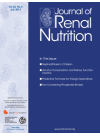Gastrointestinal mucosal cell injury caused by sevelamer crystals- Case series and literature review
In end-stage-kidney-disease (ESKD) hyperphosphatemia occurs secondary to decreased renal elimination with continued intestinal absorption of dietary phosphate. Even in chronic kidney disease, glomerular filtration rate lower than 30 ml/min markedly decreases the filtration of inorganic phosphate and increases its serum level. Sevelamer, a non-calcium phosphate binder, is commonly used to control hyperphosphatemia. Available in two forms- sevelamer hydrochloride and sevelamer carbonate, it absorbs phosphate in the gastrointestinal tract and is known to have minimal adverse effects.



